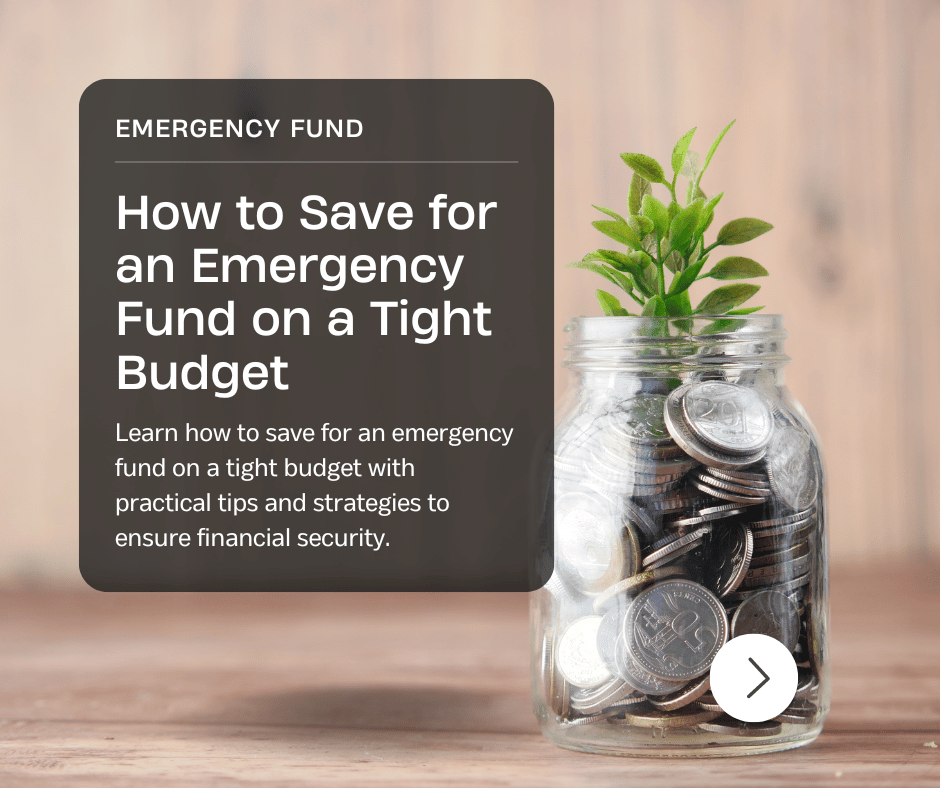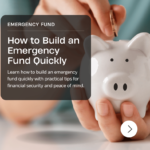In today’s unpredictable world, financial security is more important than ever. Saving for an emergency fund on a tight budget might seem daunting, but with careful planning and commitment, it’s entirely achievable. This guide will walk you through practical steps to ensure you can build a robust emergency fund, even when money is tight.
Importance of Emergency Fund
An emergency fund acts as a financial safety net, helping you cover unexpected expenses without derailing your budget. Whether it’s a medical emergency, car repair, or sudden job loss, having an emergency fund ensures you can handle surprises without resorting to debt.
Understanding Emergency Funds
What Constitutes an Emergency?
Defining what counts as an emergency is crucial. An emergency should be a situation that significantly impacts your financial stability and requires immediate attention. Examples include urgent medical expenses, essential home repairs, or unforeseen job loss.
Assessing Your Financial Situation
Evaluating Income and Expenses
Start by examining your current financial situation. List all your income sources and track your monthly expenses. This will give you a clear picture of where your money is going and help identify areas where you can cut back.
Setting Realistic Savings Goals
Defining the Target Amount
Determine a realistic target for your emergency fund. Financial experts recommend saving three to six months’ worth of living expenses. However, start with a smaller, achievable goal and gradually increase it as your financial situation improves.
Creating a Budget
Tracking Income and Expenses
Creating a budget is essential to manage your finances effectively. Document all your income and categorize your expenses. Use budgeting tools or apps to help you stay organized and ensure every dollar is accounted for.
Reducing Unnecessary Expenses
Identifying Non-Essential Spending
Review your expenses and identify non-essential items you can eliminate. This might include dining out, entertainment subscriptions, or impulse purchases. Redirect the money saved towards your emergency fund.
Prioritizing Needs Over Wants
Distinguishing Between Needs and Wants
Prioritizing your spending is key. Focus on essential needs like housing, utilities, and groceries, and limit spending on non-essential wants. This discipline will free up more money for your savings.
Automating Savings
Setting Up Automatic Transfers
Automating your savings makes it easier to stay consistent. Set up automatic transfers from your checking account to your savings account each month. This ensures you save regularly without having to think about it.
Using Cash Envelopes
Cash Envelope System Explained
The cash envelope system involves allocating cash for different spending categories and placing it in labeled envelopes. Once an envelope is empty, you can’t spend any more in that category. This method helps control spending and boost savings.
Finding Extra Income Sources
Part-time Jobs and Freelancing
Consider finding additional sources of income. Part-time jobs, freelancing, or gig work can provide extra cash to bolster your emergency fund. Explore opportunities that fit your skills and schedule.
Selling Unwanted Items
Decluttering for Cash
Decluttering your home and selling unwanted items can generate extra money. Platforms like eBay, Craigslist, or local consignment shops are great for selling items you no longer need.
Cutting Down on Subscriptions
Reviewing and Cancelling Subscriptions
Review all your subscriptions and cancel those you don’t use regularly. Streaming services, magazine subscriptions, or gym memberships can add up. Redirect these savings to your emergency fund.
Cooking at Home
Benefits of Home-cooked Meals
Eating out can be expensive. Cooking at home is not only cost-effective but also healthier. Plan your meals, make grocery lists, and cook in bulk to save both time and money.
Avoiding Impulse Purchases
Strategies to Curb Impulse Buying
Impulse purchases can quickly derail your budget. Implement strategies like waiting 24 hours before making a purchase or making a shopping list to avoid buying unnecessary items.
Leveraging Discounts and Coupons
How to Use Coupons Effectively
Using coupons and looking for discounts can significantly reduce your expenses. Apps and websites dedicated to couponing can help you save on groceries, household items, and more.
Saving Windfalls and Bonuses
Making the Most of Unexpected Income
When you receive unexpected income, such as tax refunds, bonuses, or gifts, resist the temptation to spend it. Instead, direct it towards your emergency fund to accelerate your savings.
Utilizing Apps for Savings
Best Budgeting and Saving Apps
There are numerous apps designed to help you budget and save. Apps like Mint, YNAB (You Need A Budget), and PocketGuard can help you track expenses, set goals, and find areas to cut costs.
Creating a Financial Cushion
Steps to Build a Cushion
Building a financial cushion involves gradually increasing your savings. Start with small, consistent contributions and increase the amount as you find ways to cut costs or earn extra income.
Understanding High-Yield Savings
Benefits of High-Yield Savings Accounts
Consider opening a high-yield savings account to earn more interest on your emergency fund. These accounts offer higher interest rates compared to regular savings accounts, helping your money grow faster.
Emergency Fund and Debt
Balancing Savings with Debt Repayment
Balancing saving with paying off debt can be challenging. Focus on building a small emergency fund first, then allocate extra funds towards high-interest debt. Gradually increase your savings as your debt decreases.
Engaging Family in Saving Efforts
Collaborative Saving Strategies
Involve your family in your savings goals. Discuss the importance of an emergency fund and brainstorm ways to cut costs together. Collaborative efforts can make saving more manageable and effective.
Setting Milestones and Celebrating
Celebrating Small Wins to Stay Motivated
Set milestones for your savings goals and celebrate when you reach them. Small rewards for hitting targets can keep you motivated and make the process more enjoyable.
Staying Consistent and Patient
Importance of Consistency in Saving
Consistency is key to building an emergency fund. Stay patient and persistent, even if progress seems slow. Over time, your savings will grow, providing you with financial security.
Revisiting and Adjusting the Plan
Periodic Review of Savings Plan
Regularly review your savings plan to ensure it aligns with your financial situation and goals. Adjust your budget, contributions, and strategies as needed to stay on track.
Real-Life Success Stories
Inspiration from Others’ Experiences
Reading about others who have successfully saved for an emergency fund can be motivating. Learn from their strategies, challenges, and successes to inspire your own journey.
FAQs
How much should I save in an emergency fund? Financial experts recommend three to six months’ worth of living expenses. Start small and gradually increase your savings as you can.
Can I save for an emergency fund while paying off debt? Yes, it’s possible. Focus on building a small emergency fund first, then prioritize high-interest debt repayment. Gradually increase your savings as your debt decreases.
What if I have a very tight budget? Even on a tight budget, you can save by cutting non-essential expenses, finding extra income sources, and using strategies like the cash envelope system.
How often should I review my savings plan? Review your savings plan at least quarterly. Adjust your budget, contributions, and strategies as needed to stay aligned with your financial goals.
Are high-yield savings accounts worth it? Yes, they offer higher interest rates than regular savings accounts, helping your money grow faster. Ensure the account is FDIC-insured for security.
What if I face an emergency before reaching my savings goal? If an emergency occurs before you reach your goal, use the funds you have saved and adjust your budget to rebuild your emergency fund as soon as possible.
Conclusion
Building an emergency fund on a tight budget is challenging but achievable with careful planning and discipline. By assessing your financial situation, setting realistic goals, and consistently saving, you can create a financial safety net that provides peace of mind and security in times of need. Remember, the journey might be slow, but every step you take brings you closer to financial stability. Stay motivated, celebrate your progress, and adjust your plan as necessary to stay on track. Happy saving!


